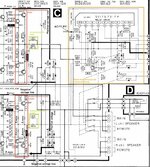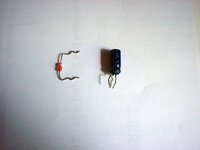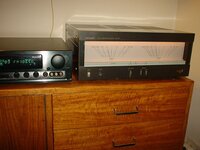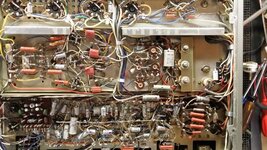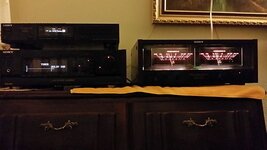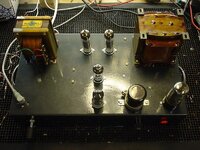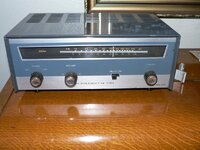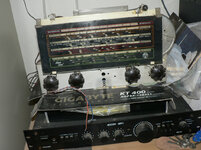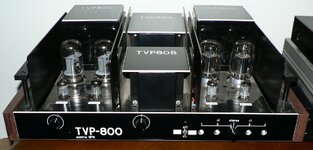Family_Dog
Administrator
Me, Jan 17th 2015:
Sadly the amp is lying in pieces on my workbench

It played absolutely perfectly for about a week, then kept cutting out and going into protection. Traced various faults, one of which amazed me somewhat, somebody had fitted a NPN transistor (2SC640) in place of a high-voltage PNP one (2SA1124) in the power regulator circuit. But it still worked, strangely enough. Not having a 2SA1124 transistor I used the closest thing I had, a NTE159. Same problem, the amp stayed on for a while and then randomly went into protection mode.
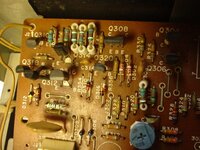
Q312 was fitted, different lead lay-out hence heat shrink on legs to prevent short-circuits.
Tracing the speaker-protection circuitry - and here I was very ably assisted by my partner at work, who is an electronics fundi (I grew up on valves, not pieces of sand) - we came to the conclusion that the TA7137P IC had an internal fault where the final stage had an intermittent open-collector status and its output was going high intermittently, thus enabling the speaker-protection relay. Proof of the pudding was the fact that there was nothing triggering it to do so as those voltages were spot-on. By earthing the IC's output, I could bring it out of protection. But now I had no speaker protection!
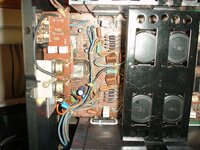
The IC (Q551) is obscured under the two blue & one orange wires bottom left of the pic (of course, whoever said it would be easy!)
Frantic e-bay searching web-searching eventually led me to a local supplier who had just one IC in stock, as well as 2SA1124 trannies, so I am hopeful that by this time next week, the Technics will be its usual chirpy self again!
-F_D
Sadly the amp is lying in pieces on my workbench

It played absolutely perfectly for about a week, then kept cutting out and going into protection. Traced various faults, one of which amazed me somewhat, somebody had fitted a NPN transistor (2SC640) in place of a high-voltage PNP one (2SA1124) in the power regulator circuit. But it still worked, strangely enough. Not having a 2SA1124 transistor I used the closest thing I had, a NTE159. Same problem, the amp stayed on for a while and then randomly went into protection mode.

Q312 was fitted, different lead lay-out hence heat shrink on legs to prevent short-circuits.
Tracing the speaker-protection circuitry - and here I was very ably assisted by my partner at work, who is an electronics fundi (I grew up on valves, not pieces of sand) - we came to the conclusion that the TA7137P IC had an internal fault where the final stage had an intermittent open-collector status and its output was going high intermittently, thus enabling the speaker-protection relay. Proof of the pudding was the fact that there was nothing triggering it to do so as those voltages were spot-on. By earthing the IC's output, I could bring it out of protection. But now I had no speaker protection!

The IC (Q551) is obscured under the two blue & one orange wires bottom left of the pic (of course, whoever said it would be easy!)
Frantic e-bay searching web-searching eventually led me to a local supplier who had just one IC in stock, as well as 2SA1124 trannies, so I am hopeful that by this time next week, the Technics will be its usual chirpy self again!
-F_D


